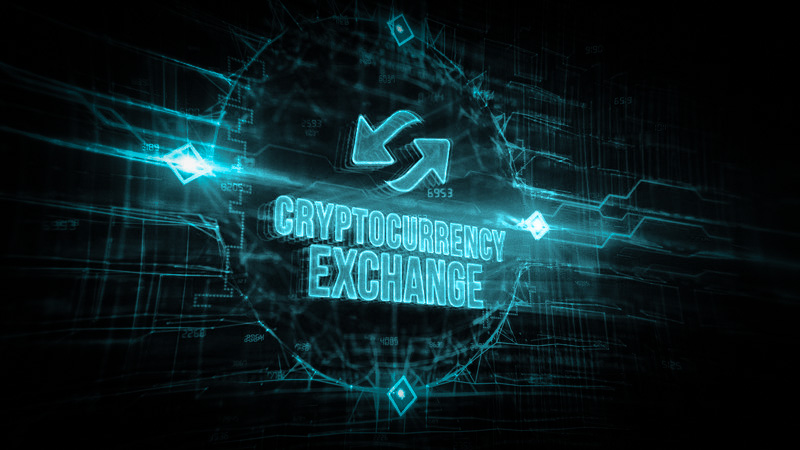MiCA is not relevant for my company.
Or is it?
A brief guide to the crypto industry:
how to decide whether you fall
under the scope of MiCA
Part II.
MiCA, the European Union´s Markets in Crypto-Assets Regulation, is set to change the crypto-landscape as we know it. Now, that there is less than a year until the Regulation as a whole comes into force, and even less time before the articles on ARTs and EMTs will be applicable, it is time to address the crucial elements and get our heads around it all! As we pointed out in our first article, a thorough knowledge of the law is essential to every market participant in order for them to identify their role and what applies to them, whether they are issuers, offerors or crypto-asset service providers. If you are in the same boat as us, do not worry, we’ve got your back! In our last article we focused on the material scope of the Regulation (what it covers), so now it is time to dissect the intricate details of the territorial (where it is applicable) and personal (to whom it applies) scope.

1. The Applicability of MiCA across EU member states
If the issuance, offer, or provision of services (the latter is referred to as CASP) is related to crypto-assets in the EU, MiCA is naturally applicable, since the whole of the European Union, including all 27 Member States, falls within its scope. Following this line of thought, legal entities resident in the EU, and other undertakings and companies not residing in the EU but wishing to get authorization to do so fall under the Regulation’s scope if they are considered crypto-asset service providers, issuers, or offerors. It is important to note that for the provision of services it is required to establish a legal person or undertaking within the EU. In case of a natural or legal person offeror who is established in a third-country, they need to notify the competent authority in the State they want to offer crypto-assets.
Although there are obligations that will remain centralized (such as the EBA’s and ESMA’s role in fulfilling a coordination role between competent authorities and across supervisory colleges), many implementational tasks among the requirements of the Regulation will be assigned to the competent national authorities. Examples would be the examination of white papers and marketing communications of those who wish to make use of crypto-assets in a financial sense.

2. Consideration of cross-border aspects in the context of Passporting
One of the most eagerly awaited aspects is the passporting of the licence provided to CASPs by MiCA. Once a licence has been acquired in the home Member State for the provision of services under MiCA – and after some requirements such as the notification requirements are also met – that licence will be usable in all EU Member States. That way the CASP is free to operate in all Member State, and not just in the Member State in which their license was obtained. As the European Commission put it: the CASPS need just one licence for the single market of 27 countries, 450 million consumers, and 23 million businesses. Less red tape and more opportunities can only be great news for anyone thinking about starting to provide crypto-asset services in the EU.
We will cover the questions that may arise regarding the passporting of provision of services in one of the following articles in our MiCA series.

3. Impact on non-EU entities operating in EU jurisdictions
The question of third countries is a little more complicated. When it comes to the provision of services, the Regulation makes a distinction concerning the person who initiates the service. If that person – who is established in the European Union – is the one initiating the service but from a firm based in a third country, then the Regulation deems this interaction as not provided in the EU. The approach is called reverse solicitation, an exception that will most likely be revisited many times and must be understood as a narrow window of opportunity. Consequently, for example, MiCA would not apply to a situation where a Danish citizen who has of their own accord and volition sought out the services of a firm situated in Vietnam. However, if the firm’s goal from the third country is to pursue clients from the EU, and they then advertise their services to reach EU citizens through whatever means – be it online marketing, TV ads, or even airplane banner advertising – that would no longer be considered as being under the client’s own initiative. In such cases, that foreign firm is then a crypto-asset service provider under MiCA, so in order to operate in the EU it will need to establish a legal entity within the EU and acquire the relevant authorization.
 The personal scope always designates the natural and legal persons to whom the legislation directly or indirectly applies. Although MiCA does affect the users of crypto-asset services, the clients (for example via marketing communication), we will focus on in the following: the actors (on whom the Regulation imposes a slightly more active role), that is the issuers of crypto-assets, offerors, and crypto-asset service providers.
The personal scope always designates the natural and legal persons to whom the legislation directly or indirectly applies. Although MiCA does affect the users of crypto-asset services, the clients (for example via marketing communication), we will focus on in the following: the actors (on whom the Regulation imposes a slightly more active role), that is the issuers of crypto-assets, offerors, and crypto-asset service providers.
1. Identification of individuals or undertakings affected by MiCA:
1.1 Issuers
According to the definitions in MiCA, issuers are natural or legal persons and other undertakings who issue crypto-assets. Based on the Regulation, issuance may predate the acquisition of the authorization, but you cannot engage in any activity.
In one of our next pieces we will also cover the timeline for authorization and the process of licensing that you can expect, and what exactly you can and cannot do until you have obtained such authorisation.

1.2. Offerors
Under MiCA ‘offerors’ are natural or legal persons, other undertakings or issuers who offer crypto-assets to the public. This offer is described as a communication of adequate information regarding the proposition and the proffered crypto-assets regardless of their form. The aim is to make it possible for the person to whom the communication is sent to decide, on the basis of the information received, whether or not to take up the opportunity. For the purposes of the latter, MiCA made it a requirement for offerors to draw up white papers and to make their marketing communications verifiable. However, there are some exemptions depending on what type of token one wishes to offer to the public, based on the number of persons the communication is intended to reach, and the timeframe given for consideration, under which the offeror can be released from such an obligation.
We will return to the topic what is required for a white paper, breaking it down in detail by the classification of token in a future article.
1.3. Crypto-asset service providers (CASPs)
CASPs, aka crypto-asset service providers, are legal persons or other undertakings –– whose goal is the provision of one or more crypto-asset services. It is important to note that natural persons are not covered by the definition, which means that you need to establish a legal entity to be able to provide crypto-asset services, or in certain cases some other undertaking that provides an equivalent level of protection for the third parties´ interests.
 These services should be provided to clients on a professional basis because fully decentralized services – that is, services without any intermediary – do not fall within the scope of MiCA. For example, if you and your friend decide to sell your crypto-assets to one another, without the help of any mediator, you do not have to worry about the Regulation. Additional requirement beside these for a CASP is to comply with Article 59 of MiCA on Authorisation.
These services should be provided to clients on a professional basis because fully decentralized services – that is, services without any intermediary – do not fall within the scope of MiCA. For example, if you and your friend decide to sell your crypto-assets to one another, without the help of any mediator, you do not have to worry about the Regulation. Additional requirement beside these for a CASP is to comply with Article 59 of MiCA on Authorisation.
As for what qualifies as a crypto-asset service, MiCA basically follows the logic of the traditional financial ecosystems and therefore the following dealings fall under the scope of the Regulation:
I. Providing custody and administration of crypto-assets on behalf of clients:
In this case, the provision of the specific service happens on behalf of clients. The provision of custody and administration entails the safekeeping or control of crypto-assets, or of accessing such crypto-assets with a private cryptographic key where the latter is relevant.
II. Operation of a trading platform for crypto-assets:
By operation the Regulation means the management of one or several multilateral systems that, based on the system itself and its rules, makes it possible for multiple third parties to purchase and sell interests in crypto-assets with each other. This transaction can either be an exchange of crypto-assets for funds, or an exchange of crypto-assets for other crypto-assets.
III. Exchanging crypto-assets for funds:
In this type of exchange, the service provider concludes purchase or sale contracts for crypto-assets with clients by using proprietary capital. As the name indicates, it can only happen in exchange for money.
IV. Exchange of crypto-assets for other crypto-assets:
This is the same as the above case, but the object of the exchange is different: the exchange happens for other crypto-assets.
V. Execution of orders for crypto-assets on behalf of clients:
In this case, the service provider acts on behalf of clients, concluding agreements, and purchasing or selling a crypto-asset or multiple crypto-assets or subscriptions for one or more crypto-assets. This also entails the conclusion of contracts to sell crypto-assets at the moment of their offer to the public or admission to trading.
VI. Placing of crypto-assets:
By placing the Regulation means marketing activities on behalf of or for the account of the offeror, or it can happen on behalf of or for a party related to the offeror. The marketing is of crypto-assets and it is communicated to third-party purchasers, where the Regulation does not differentiate between natural or legal person purchasers.
VII. Reception and transmission of orders for crypto-assets on behalf of clients:
The focus of this service is on handling orders from third parties, and it means that the crypto-asset service provider receives orders from a person to purchase or sell one or more crypto-assets or to subscribe for one or more crypto-assets. The service provider is also entrusted with the transmission of that order to a third party for execution.
VIII. Providing advice on crypto-assets:
This might be the most surprising service in the CASP list. By the provision of advice the Regulation means ‘offering, giving or agreeing to give personalised recommendations to a client, either at the client’s request or on the initiative of the crypto-asset service provider providing the advice, in respect of one or more transactions relating to crypto-assets, or the use of crypto-asset services’. This means that giving specific advice regarding crypto-assets counts also as a crypto-asset service.
IX. Providing portfolio management on crypto-assets:
In this case, the service is described as the management of portfolios at the client´s direction on a discretionary client-by-client basis where these portfolios include one or more crypto-assets.
X. Providing transfer services for crypto-assets on behalf of clients:
This is a rather simple service that entails the transfer of crypto-assets from one distributed ledger (DTL) address or account to another. The client can be either a natural or legal person.

1.4. Important to note: advisory services
As we mentioned above, even if a legal person or an undertaking wants to participate in nothing but consultancy regarding crypto-assets, the necessary authorization must be acquired for compliance with MiCA. The Regulations consider this type of advisory service as equivalent to the investment advice regulated in MiFID II.
The Regulation specifies that the advice – to be considered advice on crypto-assets – needs to be regarding specific transactions or on the usage of crypto-services customized to the client´s needs, which means that:
- The advisor shall establish whether the crypto-asset is suitable for the client, while bearing in mind the client’s:
- Knowledge and experience in investing in crypto-assets,
- Investment objectives like risk tolerance, and
- Financial situation.
- Furthermore they should also inform the clients, whether the advice is given on an
- Independent basis or
- Broad or restricted analysis
Further requirements for CASPs to acquire authorization, such as the place of effective management, residence of directors or registered office in a Member State will be the topic of our next article in the MiCA series.

Although MiCA does cover a wide range of angles in the crypto industry, there are several points in need of polishing. It is true, that many sides of a phenomenon like the crypto-market, the rules of which exist partly at a practical level, are difficult to grasp. That is precisely why the legislator has asked for help from various bodies, most notably the European Securities and Markets Authority (ESMA) and the European Banking Authority (EBA) to fill in the still missing pieces. They are required to work on a few sets of regulatory technical standards (RTS) and on implementing technical standards (ITS) and to consult with market participants to produce the most realistic results as possible.

In the framework of that European collaboration during the implementation phase of MiCA, ESMA (in close cooperation with the EBA, EIOPA, and the ECB) is consulting with the public on a range of technical standards bundled into three main consultations. The first and second package is already out, the third is to be anticipated in the first quarter of 2024. Although the deadline for contribution of the first two has already passed, there is still time to participate and have a say in the upcoming third package of consultation.
And that is not all! ESMA and EBA are continuously preparing ever more consultations in order to tackle the more difficult part of the Regulation, such as on the requirements on conflict of interest under MiCA. We are on the lookout for all of them and we will brief you on the most important takeaway on a regular basis on our LinkedIn channel. In general it can be stated that, based on the consultations that have already happened, the industry’s activity is pretty moderate, so we would hereby like to encourage all of you to participate and share your insights directly with the organizations, because you know the rule, it is more rewarding and constructive to shape the world than to complain about its inadequacies afterwards.

1. Significance of MiCA on a global scale: the early bird gets the worm?
Has the EU made a bold move here? Although some might not see it that way, one thing is pretty much beyond doubt: the European Union took on a major task in its recent attempt at crypto-asset regulation. Since there have not been many attempts to provide uniform regulation of crypto in its global history to date, the EU is among the first legislators to come up with a comprehensive framework for the industry.
Although many realized quite early on the changes crypto-assets would bring to traditional financial practices, the solution has been a long time coming. MiCA itself has been in the making for quite some time – the first proposal came out in 2019, following a lot of background work and research – but even in its finalized form, to the shock of many it seems, the real work is only just about to begin. Nevertheless, the fact that the legislation is actually ready is a significant milestone in the effort to regulate this market on a global scale. According to Bruno Le Maire the French Minister for the Economy, Finance and Industrial and Digital Sovereignty: “This landmark regulation will put an end to the crypto wild west and confirms the EU’s role as a standard-setter for digital topics.”

2. The EU´s perspective vs. the USA’s: long-term benefits vs. short-term gain?
Since the advent of cryptos, or indeed any of the new technologies, the question has been the same: will this innovation stand the test of time, or is this just another gadget that will fade into obscurity after a few decades? This conundrum has also shaped the general global approach to crypto-assets: is it necessary to regulate it or is it wiser to influence its existence only indirectly and let things go unsupervised? With the introduction of MiCA, the EU has clearly taken a stance on the former, in the face of the regulation-averse attitude of the USA.
Is the EU right in the approach it has chosen?
Many think that regulating a sector of this sort is a mistake. It is true, that the introduction of new rules is likely to hinder the administered market in one or two aspects initially. Setting up a timeline one must follow or making it harder to access specific authorizations could result in entities leaving the European market in search of less strict conditions. That could mean that the USA is up to win another economic race and the EU is about to lose its position on the global industry map of crypto-assets.

But does it, really?
In practice we have seen the types of obstacles that new regulations create tend to be temporary. If we take in the longer-term perspective, the benefits of market stability usually outnumber the losses that the actual market potentially suffers in the interim period in which the globally unbalanced situation and radically varying international legal landscapes can lead to regulatory arbitrage. Furthermore, it also seems evident, that a lack of legal certainty can result in a less innovative milieu. Jacques Pelkmans and Andrea Renda argue in their study ‘How can EU Legislation Enable and/or Disable Innovation’ that regulation acts as a stimulus both to the will to innovate and to each of the phases of the innovation cycle. The uncertainty of the legal background makes it harder to act because you don’t know the rules of the game you are playing.
Also, regulation acts as quasi-proof to the world that the technology it has as its subject is worth the time it takes to create standards revolving around it, which is a strong signal and clarification that that the technology in question is here to stay. On the other hand, many market players do not like the rules to bet set out for them. This is a typical Sisyphean task, making the job of a tech lawyer even more difficult. KassaiLaw is conducting their own research in the matter under the title: `Regulating emerging technologies’ because we can see the two mindsets colliding on a regular basis in our everyday work. We would be grateful for as many responses as possible to get a thorough industry review. If you could gift a few minutes of your time, we would greatly appreciate your filling in the questionnaire to give a voice to the tech companies of the future regarding the regulatory approach to new technologies.
All in all, we are of the opinion that the EU has taken a bold and courageous step and is betting on the long-term stability compensating for the short-term disadvantageous market consequences. And don’t ignore the fact that in this development the EU has officially acknowledged that crypto and blockchain technology are here for the long haul, raising tech innovation to the level of familiar and approved legal instruments.

 Not to mention, that the mindset in the USA, which in many senses revolves around the core economic nature of free markets, might raise the question of favoring short-term gains over long-term benefits. This will lead to many of the problems that MiCA is specifically addressing, such as the lack of investor protection, and market instability. Since no firm checkpoints have been put into place in the USA yet, it might give way to fraud more easily there, which is in any case one of the fundamental criticisms of crypto: it makes an unsafe environment for investors or other stakeholders. Also, since there are as yet no clear lines of defense set up, there is nothing that could help with factors that make a market more fragile but could be avoided by proper regulatory frameworks.
Not to mention, that the mindset in the USA, which in many senses revolves around the core economic nature of free markets, might raise the question of favoring short-term gains over long-term benefits. This will lead to many of the problems that MiCA is specifically addressing, such as the lack of investor protection, and market instability. Since no firm checkpoints have been put into place in the USA yet, it might give way to fraud more easily there, which is in any case one of the fundamental criticisms of crypto: it makes an unsafe environment for investors or other stakeholders. Also, since there are as yet no clear lines of defense set up, there is nothing that could help with factors that make a market more fragile but could be avoided by proper regulatory frameworks.
It will be very interesting to see what happens next in the USA once the EU has made the clear statement of adopting MiCA, that is, which approach will turn out to be more beneficial? And which region is the more forward-thinking?
What is MiCA actually about?
1. What kind of crypto-assets are covered by MiCA? – The Material Scope
One of MiCA’s main goals was to tidy up Europe’s crowded virtual crypto shelf, and just as in real life, to do that it was essential to come up with some sort of classification method that would make the coordination of these tools possible.
The legislators have decided that the basis for their classification of the different crypto-assets will be twofold:
- Whether the cryptos in question have tied their value to something, or in other words, are seeking to stabilize their value through another asset, and
- An assessment of the risks associated with crypto-assets, ranking them from high to low risk.
Using these perspectives, the following system has been created of the crypto-assets covered, classifying them into three categories of tokens: asset-referenced tokens, e-money tokens, and other tokens.

1.1 The difficulty of classification
Deciding whether your token falls into the scope of the regulations can still be problematic. Fortunately, this has been recognised by the legislators: in principle, the authorities will be responsible for checking whether the crypto in question is classified correctly, but the legislators have mandated ESMA to issue a guideline on the matter. This guideline should be of help in differentiating between crypto and other financial instruments, when a crypto-asset is considered unique and non-fungible, as well as what classification a particular type of crypto-asset should receive. At the same time, it should be possible for the relevant authorities to request opinions from the ESAs on the categorizing of crypto-assets.
Regarding the guideline itself, we will keep an eye on the activities of ESMA and will report its appearance. Follow this series to be up to date.
1.2 Does my token fall under micas scope? The crypto-assets covered
So, based on MiCA, when it comes to classification what do we know so far?
1.2.1 E-money tokens (EMTs)
The regulations say the aim of e-money tokens is to stabilize their value by referencing only one official currency. The name came into being because of the definition of electronic money in Directive 2009/110/EC. The function of electric money in that Directive is to be an electronic surrogate for physical money, and there is a high chance they will be used for payments. The similarity in purpose between the two provided a reason to label them similarly as well.
Example: Tether or USDC.
In practice: If you are planning to issue tokens that stabilize their value with an official currency (e.g., the euro), be aware that they might qualify as e-money tokens, which not only makes you fall under the scope of MiCA, but also means you need to be qualified as either a credit institution or an electric money institution because these tokens can only be issued by such corporations. Also keep in mind that these forms of organization must comply with some pretty serious rules in order to operate, so any project of that type will require some major regulatory compliance efforts at your end.
1.2.2 Asset-referenced tokens (ARTs)
Asset-referenced tokens are crypto-assets that reference another right or value, like fiat currency or a physical asset, or a combination of these. One or a number of official currencies can be used to stabilize their value. It is important to note that asset-referenced tokens are defined using the same definition as e-money tokens: only a token that references another value but yet cannot be qualified as an e-money token can be classified as such.
Example: Pax gold or diam. Furthermore, stablecoins are seen to be categorized as asset-referenced tokens.
In practice: Asset-referenced tokens also carry a higher risk in terms of protection for their holders because they can be easily adopted to transfer or as a means of exchange; therefore, offerors of these tokens are subject to heavier requirements of licensing and operations, such as the obligation to be established in the European Union.
1.2.3 Other tokens
For the third group the legislator created a shortcut: any other token that references another asset for its value but is not an asset-referenced token or an e-money token belongs to the third category: ‘other’.
Example: Utility tokens, Ethereum gas tokens or Binance tokens.
If you still have questions concerning the classifications and practical interpretation of the tokens covered by MiCA, we will be covering it in detail in one of our next pieces in this series.
1.3 What is not included in MiCA?
1.3.1 Other regulations in force
The regulations are intended to cover the unregulated areas hit by crypto-assets in the financial markets, and to fill in those holes. So much so that the legislators identified the following principle: ‘same activities, same risks, same rules’. This means that existing rules that regulate certain assets that could be identified as crypto-assets will not be overwritten, and such crypto-assets will be subject to their own regulation, and not to the MiCA rules. Some examples are the following:
- Crypto-assets that qualify as financial instruments in Directive 2014/65/EU,
- Crypto-assets that qualify as deposits in Directive 2014/49/EU,
- Crypto-assets that include structured deposits in Directive 2014/65/EU, etc.
1.3.2 What about NFTs?
 Given the aim of this legislation is to regulate assets the value of which is easily determined and holds significant financial utility, as of today, it excludes the unique and non-fungible crypto-assets (known as NFTs). These have financial use of a limited extent, and an interchangeability resulting from their unique nature. However, the crypto-assets that are non-fungible in name only, thus in reality are fungible, are still covered by MiCA.
Given the aim of this legislation is to regulate assets the value of which is easily determined and holds significant financial utility, as of today, it excludes the unique and non-fungible crypto-assets (known as NFTs). These have financial use of a limited extent, and an interchangeability resulting from their unique nature. However, the crypto-assets that are non-fungible in name only, thus in reality are fungible, are still covered by MiCA.
The most important distinction lies within the asset or the right it represents. For the NFT to be really considered non-fungible – thus exempt from this Regulation – the represented right or asset itself has to be unique.
A few examples that are considered unique, and thus exempt:
- Digital art
- Collectibles
- Those that represent services or physical assets (e.g. real estate or product guarantees)
Examples that are non-fungible in name, but fungible in reality, thus falling under the scope of MiCA:
- Fractional parts of a unique and non-fungible crypto-asset
- Issuance of crypto-assets as non-fungible tokens in a large series or collection
- Crypto-assets that appear to be unique, but upon examination have real features, or features that are linked to usage that turns out to be not unique.
For you to be able to decide more easily whether the crypto-asset in question is a non-fungible token or not, the substance over form approach is recommended by the legislator. The asset’s true nature is the key factor of the determination of its classification.
We will cover the distinction between actual non-fungible tokens and those which are only non-fungible in name but still fall under the scope of MiCA in detail in one of our next articles.
1.3.3 Entities that are exempt
A few entities are exempt from the regulations since they do not pose any threats to financial stability, market integrity, or investor protection, such as the International Monetary Fund and the Bank for International Settlements. As these entities are internati
1.3.4 Central banks and their money
Central banks issuing digital assets in their monetary authority capacity, such as central bank money in digital form, or public authorities issuing crypto-assets – including central, regional, and local administrations – are not subject to MiCA. This is also true of related services provided by such bodies. A good example would be the Swedish Central Bank’s aspiration to issuing digital money, the e-krona project. If Sveriges Riksbank issues this, as a digital complement to cash, it would be exempt from the regulations.
This piece is the first of our #micaseries, which aims is to decipher the regulations for businesses, and to support them in their transitional period. Part II. of the MiCA series will be published next week, explaining the territorial and the personal scope. The next articles – such as on the necessary first steps, a.k.a., a transition plan for the regime change – are already in the making, so watch this space!

Good luck everyone, and remember, tech entrepreneurial life would be boring without a complete regulatory regime change every now and again.
Follow our #micaseries for clarifications and industry insights for pain-free transitioning.
If you have any questions regarding MiCa, or you would like us to dissect a particular part of it, do feel free to contact us at office@kassailaw.com
It is apparent that although the Regulation covers a large layer of the crypto-asset market, there is still a lot of work to be done before the implementation of the Regulation is finalised, with all its supporting documentation.
Fortunately, the legislator has taken this into account when defining the timeline, as there is still a long time before the Regulation becomes fully applicable in December 2024. Until then it is strongly advisable that every stakeholder who feels called to contribute to the public consultations does so, as they focus on bringing practice and theory closer together.
The next article will be on how to start your preparations for the regime change, including the so called ´transition plan´ and it is already in the making, watch this space!
If you have any questions regarding MiCA, or you would like us to dissect a specific part or relevance to your business, feel free to contact us at office@kassailaw.com and follow our #micaseries for clarifications and industry insights so that you will be transitioned without even noticing.







